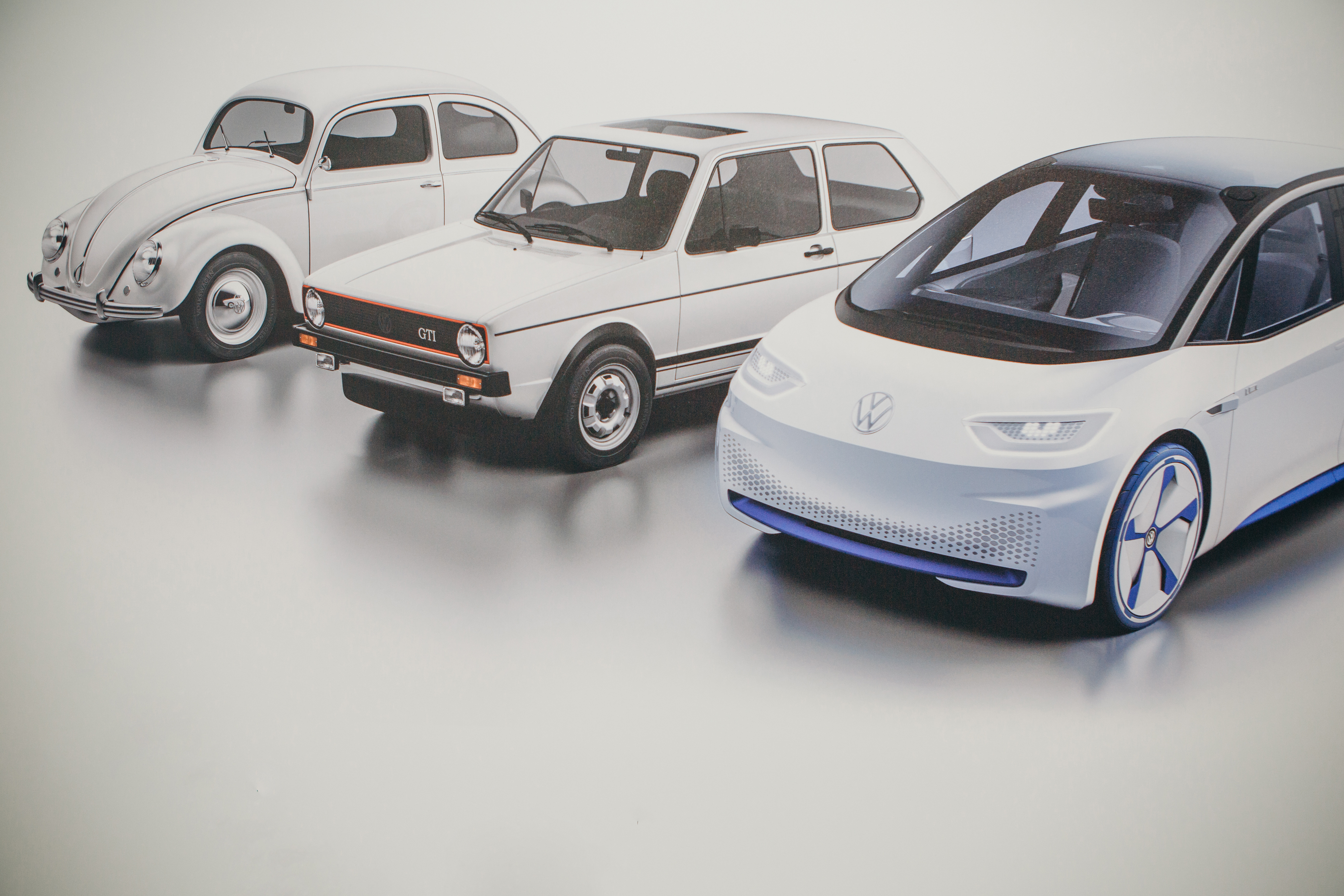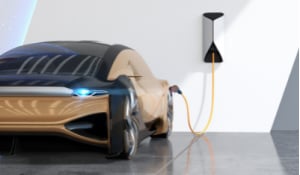Opinion: Should You Buy an Electric Vehicle?

Since electric vehicles entered the mainstream world stage not too long ago, to buy or not to buy an EV has become a question on consumers' minds. As we watch the global electrification situation unfold, it may be better to ask when, not if one should buy an EV. It is no longer a question of "if EVs are here to stay" the dam has broken, and every year a flood of newer EVs enters the market. Politicians and environmental groups are pushing for change. Consumers fascinated by the technology are jumping ship from the ICE (internal combustion engine) to greener pastures. The e-propulsion is making headway in all kinds of vehicles. If we believe the media, then it seems that one should jump onto the new bandwagon right away.
So what should you and I do? I believe the answer is not clear-cut and depends on an individual's situation, desires, likes, and circumstances. The EV revolution faces hurdles and if you feel pressed to act now, do a little research. From a technical standpoint, today's newer electric vehicles are sound. No doubt in my mind that if you decided to buy a Tesla, Lucid, Rivian, or another brand of these new EVs, you would get a quality vehicle. There are significant pros and very few cons when it comes to tech alone. Please note that there are caveats when buying older EVs, which will be discussed later. Who wouldn't want to plug in at home, charge, drive zero to sixty in 3 seconds, and have driver assist and all kinds of entertainment options on screen in the car?
Price
For many, price is a huge factor when purchasing a big-ticket item like an electric vehicle. Credit reporting group, Experian, reported that in the second quarter of 2022, 62% of buyers financed a used car. This is an increase from prior years and might be a telltale sign regarding affordability. For preowned buyers, the EV market has not yet matured to a degree where a reasonably used EV is available. Some claim that ample Nissan Leafs, BMWi3s, or Prius Hybrids are available. These models might not be made for everyone's needs as the original EVs were made small on purpose. Battery capacity was limited, and the early model's mantra was "smaller and lighter will give you better range." That led automatically to relatively inexpensive, smaller vehicles with ranges scratching around 100 miles.
One might be in a position where 100 miles will do the trick, but these that I would call Gen 1 vehicles may have undetected battery issues that can quickly turn into a headache. Don't forget, established car manufacturers were learning on the fly with the first batches of electric vehicles. Battery chemistries and long-term testing on those were not yet their expertise or readily available. There are stories available online of unfortunate buyers of pre-owned vehicles that were left stranded because their battery failed, and the manufacturer did not support the vehicle anymore. I'd therefore recommend staying away from Gen 1 unless there is a killer deal, the car is proven to be reliable, or it is a hand-me-down from a family member. Beware of assuming you can fix an electrical car like you were able to do with the older ICE cars. Even if you can access a defective battery, you are dealing now with high voltage (dangerous) and that entire unit will weigh hundreds of pounds. Of course, buying new is best when it comes to maintenance concerns, however, consider this: a decent-sized EV will run you at a minimum of $45,000. Of course, this will change as the markets mature.
Rebates
Gas savings are a big reason why electric vehicles appeal to many people. Not everybody can afford the switch simply due to high prices. There's a reason many ICE engines valued at under ten grand are driving around on American streets. To assume everyone could switch immediately to a model 3 is far from reality. Especially after the pandemic, one needs to wonder if the general public is in a state healthy enough to go from burger to steak.
Having said all that, if you are in a group where monetary considerations are less of a concern, then funding should not be the reason to stop you. If you would have considered buying an ICE engine at a comparable price, I recommend looking into an EV. Depending on the model, there may even be a tax incentive available that will sweeten the deal. However, the US government only allocates these to specific models, which also comes with some caveats. I recommend researching this topic to understand tax refunds fully. This is complicated enough that multiple pieces have been written on the tax topic, with information sometimes changing weekly.
For example, I recently read that max rebates are up to $7,500. But if you only owe $2,000 in taxes, that may be the max you can write off. Also, a company like Tesla has exceeded the threshold of 200K vehicles sold and no longer participates in the tax rebate program. Sometimes, too much success can be detrimental. When it comes to an EV's cost, it's notable that the battery is a significant portion of the overall vehicle expense. As with photovoltaics, computers, memory, etc., these prices will decrease while the battery's performance specs will go up. Over time, the vehicle price will be expected to decline with battery advances, and tax rebates may no longer be needed to entice buyers.
Costs for gas vs. charging

Nowadays, EVs strive for perfection in expending energy per mile driven, which is the mpg equivalent for the electric vehicle. Except we are now talking in electrical terms, which is kilowatt per hour. Running your hairdryer can be an excellent example to understand KWh. If you operate a small travel hairdryer, this unit consumes electrical energy while being put to work. If you own a 1,000Watt unit that runs for an hour, then you can state that you used up 1,000W or, in other words, 1KW (kilowatts) per hour. A Tesla model 3 RWD and a Hyundai Ioniq may be running in the 0.25kwh/mile vicinity of power expenditure, while an electric Ford Ranger Pickup could be as high as 0.6KWH/mile. So what does this tell us? Using the 1,000W hair dryer analogy, drying your hair for one hour equates to the Tesla driving roughly 4 miles. This is because the Tesla needs roughly 250Wh to get one mile. If the EV has 60KWh battery capacity left, then you can calculate that 60KWh/0.25KWh/mile equates to approximately 240 miles of range.
When deciding if e-savings outweigh gas, let us look at some key figures. Assuming we drive a daily distance of 50 miles, a typical ICE vehicle with 25mpg would consume 2 gallons of gasoline daily. That could run you $7.50 if 87 unleaded costs $3.75 a gallon.
Sticking with the numbers above, the following monthly expenses for comparison come to light:
| Vehicle Type | Miles Driven a Day | Length of Time | Costs per Month |
| EV | 50 | 30 days | $56.25 (15 cents, home charging) |
| EV | 50 | 30 days | $150 (40 cents, public charging) |
| ICE | 50 | 30 days | $225 ($3.75, average gas station) |
Note: Calculation for the EV 0.25KWh/mile x 50miles x 30 days x XX Cents = Expense per month
Calculation for the ICE 2 Gal x 30 days x XXX Cents = Expense per month
Looking at these numbers, charging at home would make EVs the winner. However, as you can see, this can quickly turn into an "apples versus oranges" debate and depends on a few factors. These will change personally and require you to consider your driving habits and local pricing. People that can charge at home are usually in the lucky category of having access to relatively cheap electricity. People in inner cities or apartment complexes may rely on public chargers and pay more. Looking at the monetary concerns above, one could also argue that the EV saves us $1,620 in gas alone a year, but how does that weigh against monthly payments for the new EV? Also, what if the ICE vehicle has a TDI engine and gets 40mpg, or if this is a hybrid with similar figures? What if it's an older car getting only 10mpg? Again, only the consumer may know since this needs to be weighed against your situation.
Maintenance
The EV will bring a reduction in savings. Oil changes are no longer needed, and brake pads can last a lifetime. This is because many EVs employ regen braking, where the motor brake funnels the captured energy back into the battery. This increases efficiency and reduces brake wear since they no longer have to work hard. One thing that isn't clear is if an EV increases tire wear since they are usually hundreds of pounds heavier than equivalent ICE cars, primarily thanks to the battery weight. Again, older Gen 1 vehicles may have issues that can be hard to address. Newer vehicles should be a charm to enjoy with little or no maintenance needed.
Charger availability
There are currently four options for charging out there. The Tesla network is probably the most extensive, followed by Electrify America's public charge network. The third option is to use a local station, not a part of either, and the fourth option is to use a home charger. Depending on your situation and where you are, some of these may or may not be available to you and impact your decision-making. With a Tesla, it seems to be there will be no problem at all, but what if you live in an area that is genuinely too rural to sport a charger? The Tesla network will be available if you live in a modern city or near an interstate. Please note, as of this writing, only Tesla vehicles can access the network, although there is always talk that this may change and the network will open to everyone. The Electrify America network is meant to serve the rest of the industry and has made good progress. I recommend looking up the public charging networks to see what is close by or if things are out of reach.

Image: PlugShare map of available US charging stations. To see the entire available list, zoom in closer on each state.
When looking at available charge stations, ensure you understand what kind of station is waiting for you. It will most likely be a level 2 or DC fast charger. I could dig into the charger type subject further, but let's say that level 2 usually is a multiple-hour charge deal, whereas the DC fast charge usually takes between 30 minutes to an hour to get you back on the road. You cannot expect a level 2 to get you back on the street in 30 minutes; only the DC fast chargers can achieve that. Level 2s are usually installed in your garage, in front of a hotel, or similar locations. The DC fast chargers appeared along interstates first, but thanks to Tesla and Electrify, they also show up more and more at shopping malls and gas stations. Ideally, you use your EV for a daily commute; the distance is less than 100 miles, and you recharge overnight at your home. Maybe you can also charge at your workplace. If neither option applies, you will rely on what you can find in public spaces. Here, you will need to consider how to coordinate this and if this fits your travel route and habits.
Range
One of the most debated topics is range. Here, once again it all depends on make, model, battery size, and a few other not-so-obvious influences. Is this an older EV, maybe a Gen 1? Then the available range may only be 100 miles, or even as low as 70 to 80 miles due to degradation over time. Is the nominal range 240 miles? But we must suddenly realize that in winter times this may shrink to 180 miles as I was told by a person charging her EV at a DC fast charger at Walmarts. This is nothing unusual, but one needs to be aware.
Do we want to tow equipment? Again, a recent discussion with a person pulling a trailer led to the conclusion that the effective range on the pickup went down to roughly 120 miles after connecting a camper. Of course, one can assume now all kinds of loads from Jetskis to large-scale trailers and there will be different limitations and ranges for each one of them. Will I be able to charge at work or at home? Can I charge when towing equipment or do I need to disconnect the trailer to reach the charger?
Conclusion
There is no simple answer to this question. If you are interested in purchasing an EV, keep these four essential points in mind:- Check your monetary affordability
- Compare savings in gas and maintenance
- Check charging opportunities
- Check your range requirements

This opinion blog was written by Torsten Gruhn, Bender Inc.'s resident expert for all things related to EV electrical safety solutions. Torsten is the Head of Bender's EV Sales at Bender Inc., having joined over 25 years ago when the company only had 300 employees. He started out as a certified electrical motor rewinder in Germany. After graduating from trade school, Torsten worked with nearly everything electrical that can produce or transform power. He obtained a Bachelor of Science in electrical engineering from the University GH in Paderborn, Germany with the emphasis on power generation, transmission and distribution.
This article is for informational purposes only. Bender provides the information "as is" without warranty and is not responsible for its accuracy or reliability. No warranties are given regarding its suitability for any specific circumstances.



